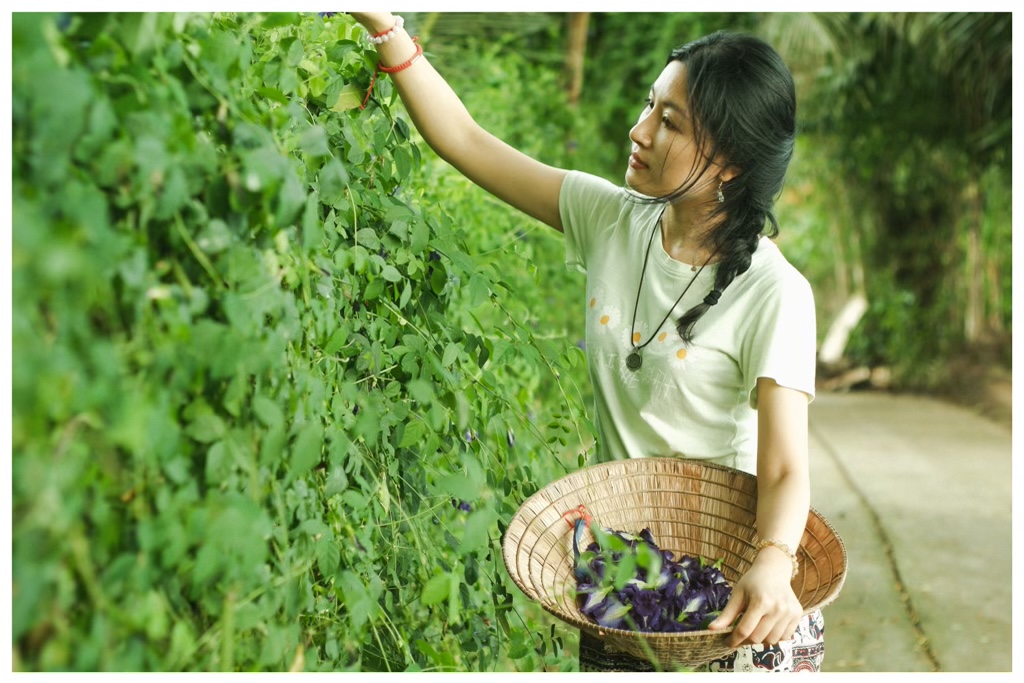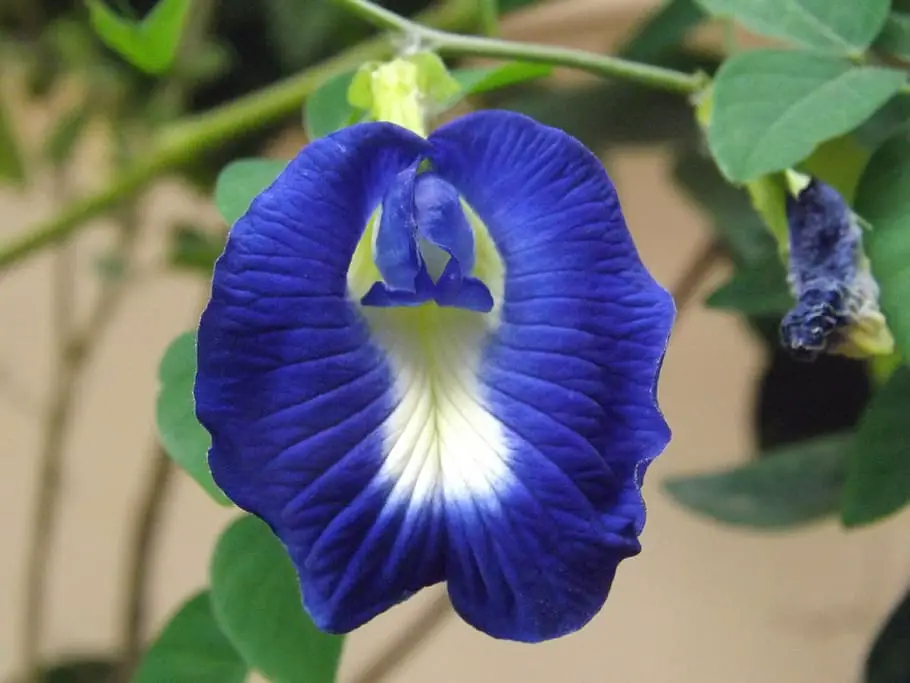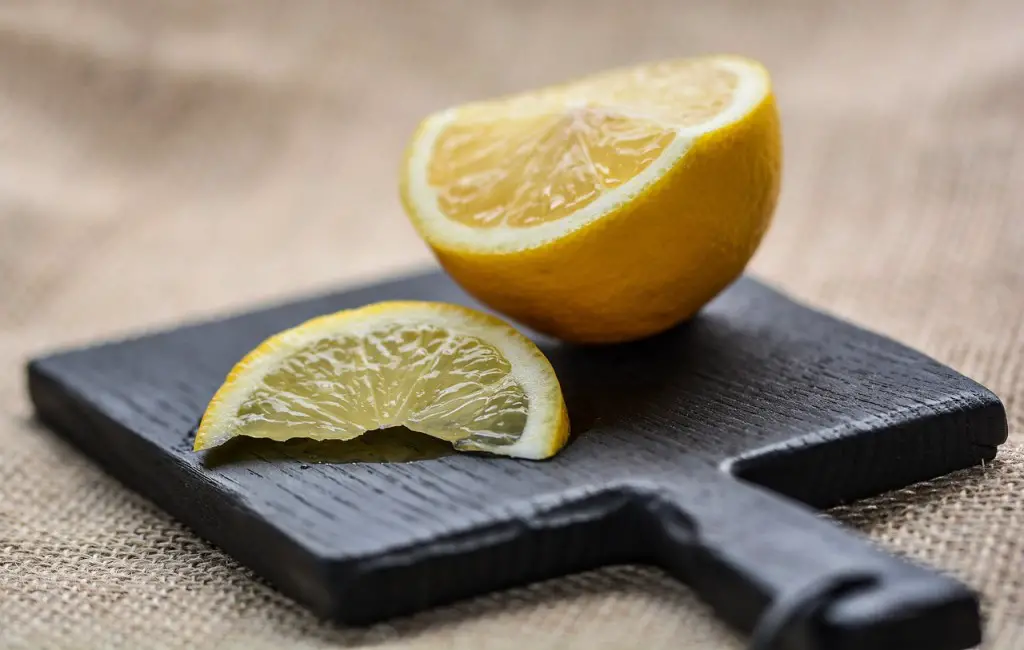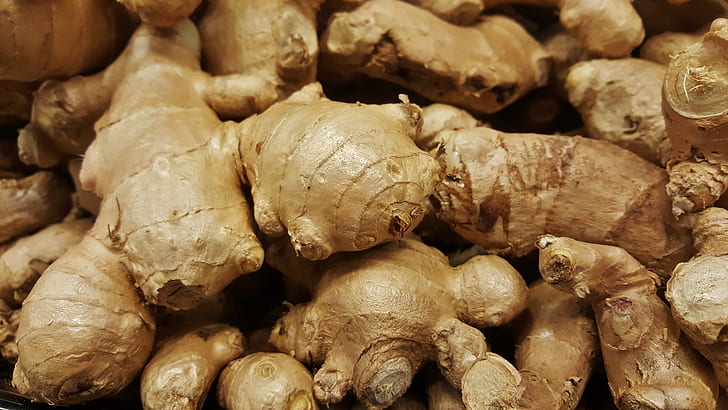
Butterfly pea tea is a special kind of tea made from dried flowers called butterfly pea flowers. These flowers are blue, and when you put them in hot water, they turn the water blue, too. It’s like magic! But the cool part is that if you add something sour, like lemon juice, to the blue tea, it changes color and becomes purple.
The tea has a light flavor with floral notes and a tinge of sweetness. The fun fact is that it can change color depending on the pH level of the liquid (it is mixed with).
In this article, we will answer some common questions about butterfly pea tea, such as what butterfly pea tea tastes like, what factors affect its taste, and what things can enhance its flavor. So, without further ado, let’s begin!
What Does Butterfly Pea Tea Taste Like?
Butterfly pea tastes floral, mildly sweet, and somewhat similar to chamomile, with earthy and woody notes similar to green tea. Butterfly pea tea itself is not overly strong or overpowering. The taste of butterfly pea tea is a result of the following elements.
Vegetable-ish!
Imagine walking through a garden early morning when everything is still wet with dew. You might notice a fresh, green scent in the air. Now, think about how vegetables like spinach or lettuce taste when fresh – they have a crisp and slightly grassy flavor, right? That’s the taste we’re discussing when we mention the “vegetable taste” of butterfly pea tea.

When you drink butterfly pea tea, it’s like gently sipping this freshness. The tea has a subtle hint of this green, grassy flavor, which works with its earthy base taste.
Green Tea
Have you ever sipped on Sencha green tea? If so, you may find a familiar companion in butterfly pea tea. Butterfly pea tea and green tea are like distant cousins with some shared qualities.

They both have a touch of sweetness and that grassy, natural taste. So, if you’ve enjoyed green tea like Sencha, there’s a chance you might also like the gentle and familiar taste of butterfly pea tea. They’re different, but they share a friendly bond!
Natural Sweetness
Butterfly pea tea holds a touch of natural sweetness that helps in enhancing the overall experience. This touch of natural sweetness in the tea is like having a small sprinkle of sugar already built into it.
Because of this, you might not need to add extra honey or sugar to make the tea taste good. It’s like the tea knows how to balance its flavors all on its own.
Floral Adventure
You can enjoy your senses with taste and smell. A soft and floral fragrance comes to you as you bring the cup closer. It welcomes you to a world of fine flowers. This smell combines with earthy notes, which makes you feel calm and excited.

So, when you sip butterfly pea tea, you’ll notice this subtle sweetness working with the other flavors – the floral notes, the earthiness, and even that fresh vegetable-like taste. This teamwork of flavors creates a well-rounded and pleasant aroma when you drink the tea.
Suggested Reading: What Do Snails Taste Like? Do They Taste Good or Bad?
Factors That Can Affect Butterfly Pea Tea Taste
Various elements influence the taste and overall flavor of butterfly pea tea. If you’re curious about why your tea doesn’t taste quite right, take a moment to review the information provided below.
Quality of the Flower
The flower’s quality can affect this tea’s flavor, aroma, and overall sensory experience. First and foremost, factors such as soil, water, sunlight, and climate can influence their quality. These elements play a role in determining the nutrients, antioxidants, and pigments present in the flowers.
Secondly, how the flowers are harvested and processed also matters a lot. It includes timing, drying methods, and storage conditions. These aspects affect the freshness, aroma, and strength of the flowers, which can influence the taste and color of the tea.
Lastly, the type of butterfly pea plant, its variety, and its origin also affect the quality of the flowers. Different varieties and regions can result in variations in genetic makeup, the plant’s adaptability, and its overall evolution. These factors have an impact on the final flavor of the tea.

Recommended: One popular variety is the “Clitoria ternatea” variety, the most commonly used type for making butterfly pea tea. Within this variety, different cultivars and hybrids might have slight variations in flavor, aroma, and color-changing properties. We recommend it for its exceptional taste.
When looking for butterfly pea flowers, you might come across names like “Thai Blue Tea“, “Blue Pea Vine“, or “Blue Bell Vine.” These names generally refer to the Clitoria ternatea variety and its various cultivars.
Editor’s Pick: 5 Reasons to Put Ice Cube on Burger While Grilling
Preparation Technique
How you prepare your tea is one of the factors that can affect the taste. The brewing technique involves three main aspects: the water temperature, the steeping time, and the quantity of flowers used.
Water Temperature

Hotter water generally extracts more compounds than colder water, which makes tea stronger and more bitter. However, excessively high water temperatures might also compromise the delicate aromas and flavors, resulting in a flat and dull tea. Therefore, consider using a temperature of around 80°C to 85°C to brew a perfect cup of butterfly pea tea.
Steeping Time
The steeping time determines how long the flowers are in contact with the water. A shorter steeping time leads to a milder tea taste. However, if the steeping time is high, it can make the tea too astringent and unpleasant to drink. So, we advise steeping butterfly pea tea for about 5 to 8 minutes.
Quantity of Flowers

Using a larger quantity of flowers results in more soluble compounds in the water. However, excessive flowers might overshadow the tea’s delicate nuances and intricate flavors. As a rule of thumb, use approximately 1 teaspoon of dried flowers or 5 to 10 fresh flowers per cup of water.
Suggested Reading: Taste The Local Flavor | Best Breweries In Las Vegas
Addition of Other Ingredients
Many people enjoy the natural taste of butterfly pea tea. However, some like to experiment with different ingredients. Let’s take a look at some common things you can use to give the tea a unique twist in flavor.
Lemon

Lemon is quite popular when it comes to butterfly pea tea. It has a dual effect: altering the color and introducing a new flavor. The tanginess of lemon brings out a fresh quality with its pleasant aroma. Adding just a small amount of lemon transforms the tea’s taste into something grassy.
Fun Fact: You can even mix the tea with lemonade for making cool purple lemonade.
Honey

Honey comes to the rescue for butterfly pea tea. This tea has a natural earthy taste that lacks anything beyond natural sweetness. However, adding honey can make your tea more tasty. You can create a zesty blend by combining butterfly pea tea with honey and lemon for an extra kick.
Different honeys carry their own aromas and nuances, which can interact with the earthy, floral, and vegetable-like flavors of the butterfly pea tea. This combination can result in a multi-dimensional flavor profile that’s both interesting and delightful.
Cinnamon

People usually use cinnamon with hot cocoa and coffee. However, you can also sprinkle it on butterfly pea tea to make it different and tasty. Alternatively, you can boil a cinnamon stick and steep the butterfly pea flowers with the resulting water.
This technique guarantees a more pronounced cinnamon essence in your blue tea, creating a delightful taste experience.
Mint

Like honey, mint’s refreshing quality complements the earthy taste of the tea. You can steep whole mint leaves in the tea to intensify the minty flavor. Blending peppermint tea with butterfly pea tea can replicate a similar flavor.
Ginger

Ginger makes the tea peppery, grassy, and almost spicy, but not too strong. Combined with blue tea, it deepens the earthy notes and imparts a soothing warmth to the throat. Further, you can get a comforting and amazing drink by uniting ginger, honey, and blue tea.
6 Food Ideas for Butterfly Pea Tea
Butterfly pea tea might not contribute much in terms of flavor to your food but it can certainly add vibrant colors. There are numerous ways to incorporate this blue tea into various dishes. Let’s explore six fun ways:
- Purple Lemonade – Make a special drink called “Nam Dok Anchan.” It’s like purple iced lemonade. You can even freeze the blue tea into ice cubes and put them in lemonade to surprise your guests.
- Unicorn Noodles – Cook glass noodles with butterfly pea tea to get cool blue-to-purplish noodles. They look great on a plate, especially when you serve them with colorful side dishes.
- Colorful Cocktails – Use butterfly pea tea in cocktails. Bartenders make drinks that change color! You can mix it with lime or tonic water to create different colors. These drinks are often served with bubbly drinks like sparkling wine or fizzy water.
- Malaysian Blue Rice – Try a Malaysian dish called “Nasi Kerab“. It has blue rice made by cooking the flowers and rice together. The rice looks amazing and goes well with fried chicken and pickled veggies.
- Purple Eggs – Make your eggs special by boiling them with blue tea. The egg whites turn blue and purple as they cook. These eggs are tasty and look cool.
- Blue Latte – If you want a latte without coffee, you can make a blue latte. Mix blue tea with steamed milk. It’s sweet and creamy, like a latte, but it’s blue and doesn’t have caffeine. It’s a nice drink to enjoy anytime.
Conclusion
Butterfly pea tea is not something people have everyday. But, if you ever get a chance, you must try out this unique and amazing drink. You’ll be amazed by how it tastes. Try out the different dishes we recommended where you can use butterfly pea tea. We hope you love the exceptional taste!
What Does Butterfly Pea Tea Taste Like? - FAQs
Butterfly pea tea has a mild and earthy flavor with subtle floral undertones. It is not overpowering and lacks the bitterness that some other herbal teas might have.
Absolutely! Butterfly pea tea serves as an excellent base for experimentation. Many people enjoy combining it with other herbs, spices, and fruits to create unique flavor profiles.
You can enjoy it both ways! It’s usually made with hot water, but you can also pour it over ice to have a cold and refreshing drink. You get to choose!
The tea itself has a really mild natural sweetness. It has a gentle taste with a hint of flowers. If you like it sweeter, you can add honey or sugar.
![What To Wear To a Drag Show? [HOTTEST Outfit Ideas]](https://hopdes.com/wp-content/uploads/2024/01/What-to-wear-to-a-Drag-Show-390x220.jpg)



![What to Wear to an Outdoor Concert? [Cute Outfit Ideas]](https://hopdes.com/wp-content/uploads/2023/11/What-to-Wear-to-an-Outdoor-Concert-Cute-Outfit-Ideas-390x220.jpg)
